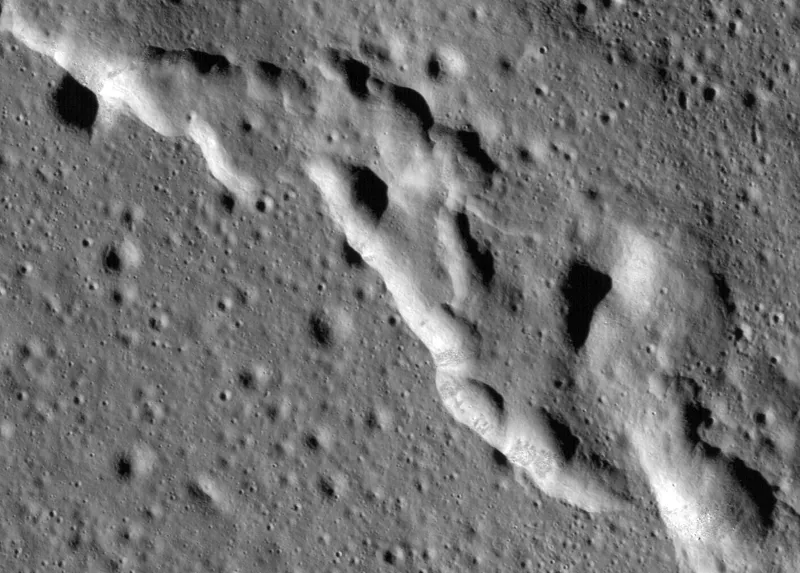When the Sun is low, exaggerated shadows on the Moon reveal many features unseen under direct illumination, including so-called wrinkle ridges.
Wrinkle ridges on the Moon are typically found on the surface of a lunar sea (the lunar maria).
They form when basin-filling lava subsides under its own weight, causing buckling on the surface.
Invisible under direct light, the ridges’ low height is exaggerated when the Sun is low in their sky.
Most lunar seas contain them to a degree, something that makes hunting them down that bit easier.
If you miss the right conditions for one sea, look at others as different ridges are likely to be seen as the terminator moves.
Read our guides on how to observe the Moon and the best features to see on the Moon.

Recording Moon wrinkle ridges
A good challenge is to record as many wrinkle ridges as you can.
If you prefer to sketch the Moon, they can be tricky to capture because of their extensive length.
Here you’ll need to adopt a summary observation technique, noting the main structure of the ridge first, then refining it, or at least interesting sections of it, later if there’s time.
Imagers have an easier time, as a low-to-medium image scale can be used to capture entire ridges in a single shot.
The skill is to try to adjust the image to best effect to bring out all of the ridge’s detail.
The dark mare’s lava combined with the often-bright bordering highland regions can make getting the image tricky.
For more info, read our guide on how to photograph the Moon.

Compiling your results
If you get results, consider organising them into a library.
Keep a note of when you made the observation and what the circumstances of the Moon (phase, libration, and so on) were at the time.
How do the ridges change in appearance throughout the lunar day?
A record of their appearance when the morning terminator (waxing phases) approaches, at full illumination and as the Sun drops in their sky with the approach of the evening terminator (waning phases), would form a very informative set of results.
In particular, it’s useful to record the shape of wrinkle ridges in respect of their host sea.
As the lava that filled the basin and eventually formed the sea cooled, the ridges tend to form concentrically to the edge of the basin.
This isn’t always easy to show with larger seas, the changing position of the terminator and illumination over the sea diffusing the overall picture.
However, smaller seas such as Mare Crisium, Mare Nectaris and Mare Humorum show this effect well.
Have you managed to observe or photograph wrinkle ridges on the Moon? Let us know by emailing contactus@skyatnightmagazine.com
